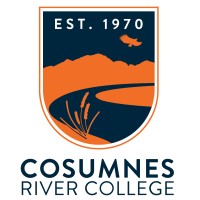Certificate of Achievement in Diagnostic Medical Sonography (Certificate)
Consumnes River College
Sacramento, CA
The CRC Diagnostic Medical Sonography (DMS) Program includes didactic, laboratory, and practicum components that are structured to facilitate the achievement of educational and career goals. According to the American Registry for Diagnostic Medical Sonographers (ARDMS), sonographers are “highly-skilled professionals who use specialized equipment to create images of structures inside the human body that are used by physicians to make medical diagnoses." Sonographers have extensive, direct patient contact that may include performing some invasive procedures. They must be able to interact compassionately and effectively with people who range from healthy to critically ill.
Students must achieve a "C" or better in all SONOG didactic courses and a "Pass" in all practicum courses to remain in, and progress through, the DMS program. Students who do not achieve these minimum expectations will be dismissed from the program.
Organizations such as the American Registry of Diagnostic Medical Sonographers (ARDMS) certify the competency of sonographers through registration.
Student Learning Outcomes
Upon completion of this program, the student will be able to:
🗸 Perform entry-level skills of a diagnostic sonographer in a clinical setting (PSLO #1);
🗸 Successfully complete the American Registry of Diagnostic Medical Sonographers (ARDMS) certification examination (PSLO #2);
🗸 Acknowledge and adhere to the scope of practice of a diagnostic medical sonographer (PSLO #3).
Career Information
Career Opportunities: According to the ARDMS, Sonography is a dynamic profession that has grown significantly over the past 25 years. With rapidly developing new technologies and increased use of diagnostic ultrasound procedures, growth is projected to continue in the future with employment opportunities for qualified sonographers in both urban and rural areas nationwide. Sonographers and vascular technologists can choose to work in clinics, hospitals, private-practice physician offices, public-health facilities, laboratories, and other medical settings performing examinations in their areas of specialization. According to the Bureau of Labor Statistics’ Occupational Outlook Website, almost two-thirds of all sonographers are employed by hospitals. The rest work in physicians’ offices, medical and diagnostic laboratories/imaging centers and outpatient care centers. Employment of diagnostic medical sonographers is expected to increase by 29.4 percent, or 1,500 jobs between 2014 and 2024. As ultrasound technology evolves, it will become a more common method used to assist in diagnosing medical conditions, favored over more invasive procedures.




